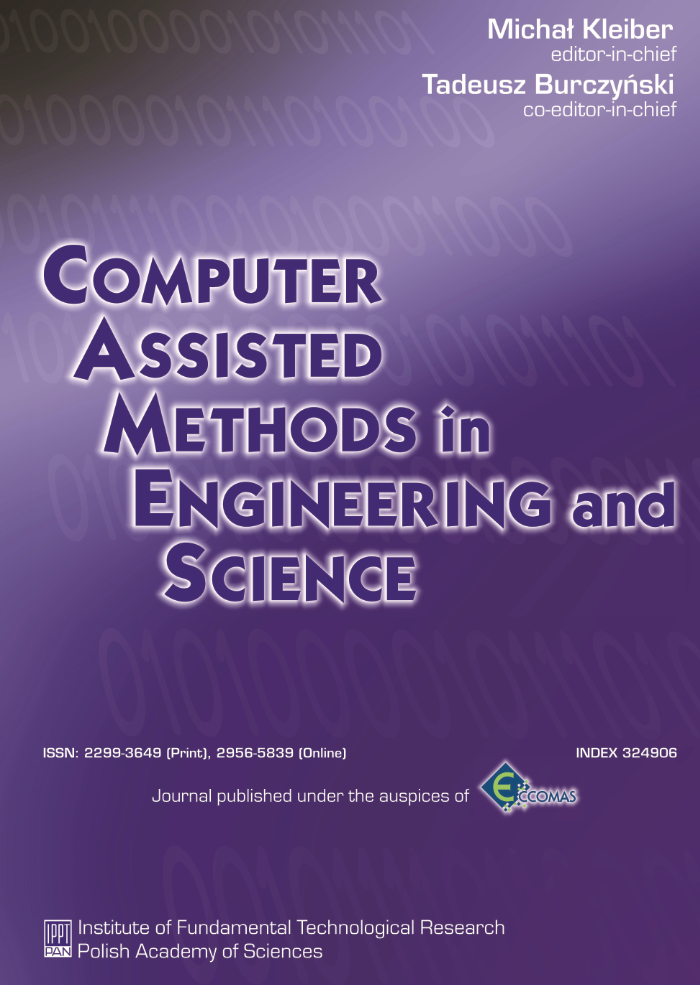Abstract
In this article one of the greatest generalized methods for establishing the equilibrium equations of a rigid body and the set of rigid bodies is proposed. It is related to six equations of moments of force about six the edges of a reference tetragon. It is possible to obtain different alternatives by substituting the force moment-equation for the force project-equation. Four different forms of equilibrium are established. It is important writing equilibrium equations of bodies possible to apply the special software as Mathcad, Maple.
Keywords:
equilibrium of a rigid body, equilibrium of mechanical system, matrix method, frame tetragon, generalized tetragon frame of axisReferences
[2] Y.K. Lin. Some recent advances in the theory of random vibration. Naturwissenschaften, 89: 187–200, 2002.
[3] G.I. Schueller. State-of-the-art report on computational stochastic mechanics. Probabilistic Engineering Me-chanics, 12(4): 197–321, 1997.
[4] C.W.S. To. The stochastic central difference method in structural dynamics. Computers & Structures, 23(6): 813–818, 1986.
[5] C.W.S. To. Direct integration operators and their stability for random response of multi-degree-of-freedom systems. Computers & Structures, 30(4): 865–874, 1988.
[6] C.W.S. To. A stochastic version of the newmark family of algorithms for discretized dynamic systems. Computers & Structures, 44(3): 667–673, 1992.
[7] D. Roy. A family of weak stochastic Newmark methods for simplified and efficient Monte Carlo simulations of oscillators. International Journal for Numerical Methods in Engineering, 67(3): 364–399, 2006.
[8] S.W. Zhang, H.H. Zhao. Effects of time step in stochastic central difference method. Journal of Sound and Vibration, 159(1): 182-188, 1992.
[9] C.W.S. To. Parametric effects on time step of the stochastic central difference method. Journal of Sound and Vibration, 137(3): 509–515, 1990.
[10] M.L Liu, C.W.S. To. Adaptive time schemes for responses of non-linear multi-degree-of-freedom systems under random excitations. Computers & Structures, 52(3): 563–571, 1994.
[11] C.W.S. To, M.L. Liu. Random responses of discretized beams and plates by the stochastic central difference method with time co-ordinate transformation. Computers & Structures, 53(3): 727–738,1994.
[12] Z. Chen, C.W.S. To. Responses of discretized systems under narrow band nonstationary random excitations. Part 1: Linear problems. Journal of Sound and Vibration, 287(3): 433–458, 2005.
[13] S.F. Wojtkiewicz, B.F.J. Spencer, L.A. Bergman. On the cumulant-neglect closure method in stochastic dynamics. International Journal of Non-Linear Mechanics, 31(5): 657–684, 1996.
[14] C. Moler, C. Van Loan. Nineteen dubious ways to compute the exponential of a matrix. SIAM Review, 20(4): 801–836, 1978.
[15] C. Moler, C. Van Loan. Nineteen dubious ways to compute the exponential of a matrix, twenty-five years later. SIAM Review, 45(1): 3–49, 2003.
[16] W.X. Zhong. On precise integration method. Journal of Computational and Applied Mathematics, 163(1): 59-78, 2004.
[17] C.W.S. To. Time-dependent variance and covariance of responses of structures to non-stationary random excitations. Journal of Sound and Vibration, 93(1): 135–156, 1984.


